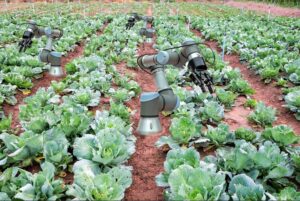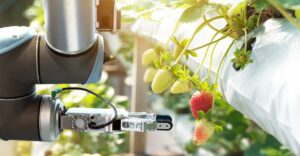In a world grappling with population growth, climate change, and resource scarcity, food and agriculture innovations have become paramount. Through cutting-edge technologies and advancements, we have the potential to revolutionize the plate and create a sustainable and efficient future. In this blog post, we will delve into the exciting world of food and agriculture innovations, exploring how they address global challenges and pave the way for a brighter tomorrow.
I. Understanding the Need for Food and Agriculture Innovations
The food and agriculture industry faces significant challenges in meeting the growing demand for food while minimizing environmental impact. Rapid population growth, climate change, and limited resources call for innovative solutions. By embracing groundbreaking technologies, we can ensure food security, promote environmental sustainability, and bolster economic viability.
II. Exploring Vertical Farming: A Paradigm Shift in Agriculture
Vertical farming represents a remarkable shift in traditional agriculture practices. With vertical farms, crops are grown in stacked layers within controlled indoor environments. This innovative approach offers numerous benefits. It enables year-round crop production, maximizes land utilization, reduces water consumption by utilizing hydroponics or aeroponics, and minimizes the need for pesticides. Notable vertical farming projects around the world have demonstrated their positive impact on local communities and urban environments. Ongoing research aims to overcome challenges such as energy consumption and scalability, further advancing this transformative agricultural technique.
III. Harnessing the Power of Precision Agriculture
Precision agriculture is revolutionizing how farmers manage their fields. By employing technologies such as GPS, drones, sensors, and data analytics, farmers can make informed decisions, optimizing crop production while minimizing inputs. This approach enables precise application of fertilizers and pesticides, reducing wastage and environmental impact. Precision agriculture also improves resource efficiency and helps farmers adapt to variable growing conditions. Real-world applications have showcased remarkable increases in crop yields, profitability, and sustainability.
IV. Unleashing the Potential of Cellular Agriculture
Cellular agriculture represents a groundbreaking approach to food production that utilizes cell culture techniques to create animal products without traditional farming. This technology includes lab-grown meat, cultured dairy, and plant-based alternatives. Cellular agriculture offers several advantages. It requires significantly less land and water, eliminates animal cruelty, and reduces greenhouse gas emissions. Despite initial challenges related to scalability and cost, recent breakthroughs and growing market trends indicate a promising future for cellular agriculture.
V. Innovations in Food Processing and Packaging
In addition to production methods, innovations in food processing and packaging play a crucial role in revolutionizing the plate. Technologies like high-pressure processing, cold plasma treatment, and novel preservation methods improve food safety, extend shelf life, and preserve nutritional quality. Sustainable packaging solutions, such as biodegradable materials and eco-friendly designs, contribute to reducing food waste and environmental pollution. Implementations of these innovations are already making a significant impact across the food industry.
Takeaway
Cutting-edge food and agriculture innovations hold immense potential in addressing the global challenges we face today. From vertical farming and precision agriculture to cellular agriculture and advancements in food processing and packaging, these technologies offer sustainable solutions to ensure food security, minimize environmental impact, and enhance economic viability. By staying informed and supporting these revolutionary practices, we can contribute to a better future, one where the plate is truly revolutionized.




